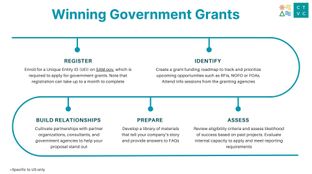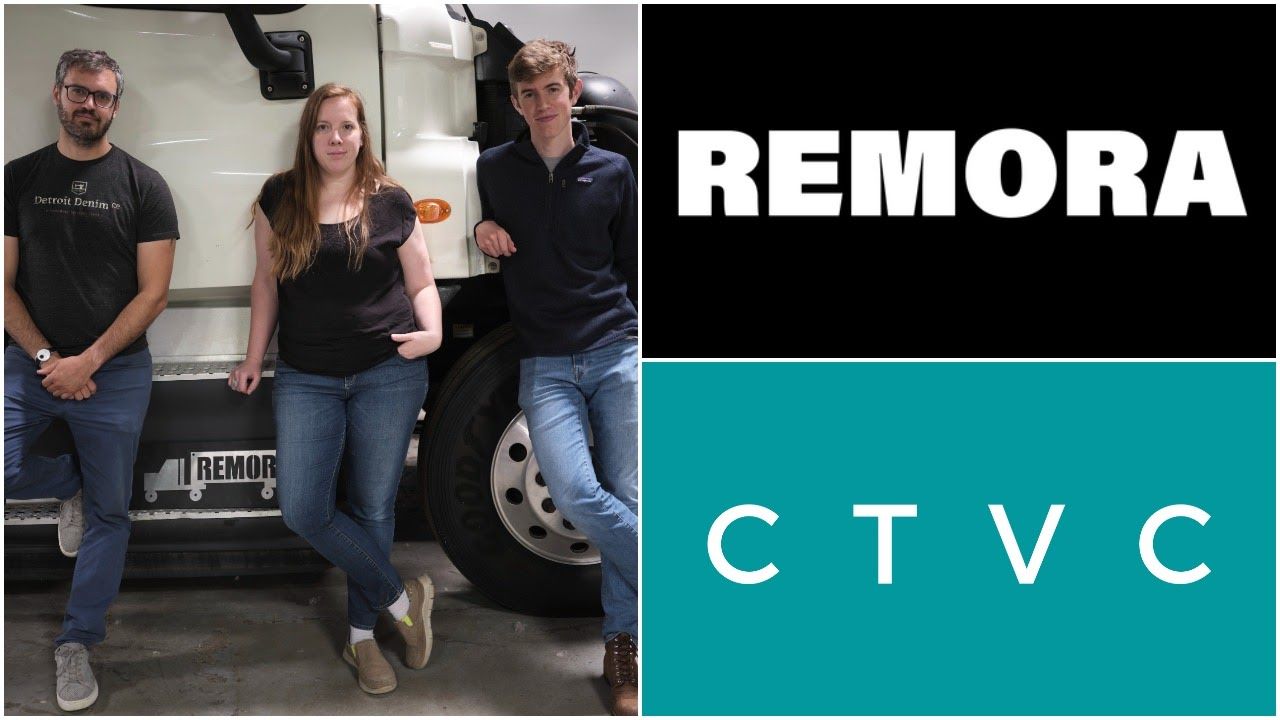
🌎 Get ready with me: Government grants edition 💅💵
A founder’s guide to winning non-dilutive funding with Elemental Excelerator
How Remora is decarbonizing trucking one tailpipe at a time

At some point in their lifecycle, 70% of the goods in the US are loaded onto one of the nation’s 2 million semi-trucks. This single form of transportation contributes to 5% of the US’ entire carbon footprint. Semi-trucks are notoriously gnarly to decarbonize - batteries are too heavy, H2 too hard to handle, and yet there are few alternatives to long-haul 18 wheelers. Enter Remora’s mobile CCS solution. The young startup just announced their star-studded $5.5m Seed raise in the WSJ, along with a deep roster of early customers. We chatted with founder Paul Gross on decarbonization pathways for long-haul trucking and how Remora is building a carbon capture and sequestration logistics network. [Disclaimer: Sophie is an angel investor.]
What is the size of the transportation emissions problem?
Transportation is the largest sector of emissions in the US. The 2 million semi-trucks on the road emit 339 million metric tons of carbon dioxide per year, which is ~5% of the entire US carbon footprint. And, of course, semi-trucks are all over the world.
What’s contributing most to the magnitude of the semi-truck emissions issue? Is it a volume problem or a per unit problem?
I think it's a volume problem. Semi-trucks haul 70% of all goods in the United States, so almost everything around us has sat on a semi at one point in its lifetime. Trucking is an $800b industry, but many people who live in cities don't recognize how big it is because they’re not exposed to semi-trucks rolling by every day.
Why are semi-trucks so hard to decarbonize?
Trucks are weight limited up to 80,000 lbs. So, any additional weight to the truck itself translates into less available weight carried in the trailer. The challenge with batteries is that they are less energy dense than diesel, so when you electrify a truck, you add thousands of pounds of batteries, which inherently means that the operator loses thousands of pounds of payload capacity. That’s why people like Bill Gates have said that electrification won’t be the right solution for long haul trucking, cargo ships, or airplanes. It’s a payload capacity issue.
Not to mention, charging one of these trucks requires a whole new type of charging infrastructure, which we currently don't have. A new network of charging stations would need to be built for this type of truck, on top of wholesale replacing every truck on the road.
What other technologies have the potential to decarbonize long-haul trucking?
A lot of people acknowledge that batteries aren’t going to work for long-haul trucking, but could be a great solution for regional or city-haul trucking. There are already Class 8 trucks on the market that can travel a distance of 150 miles. What we're doing at Remora is complementary to that.
Hydrogen is often touted as a substitute long-haul solution to batteries. My co-founder, Eric, built hydrogen fuel cell semis before Remora. However, hydrogen is highly flammable and trucks are required to use heavily reinforced hydrogen tanks certified by the Department of Transportation - which also ends up taking up as much payload capacity as the batteries on electric trucks. There’s also still a long way to go before hydrogen becomes zero emissions. 99% of the world’s supply of hydrogen comes from coal or natural gas, and green hydrogen has only been produced in pilot plants so far. Scaling that up and getting down the cost curve to the same price level as diesel will be a long undertaking.
Biofuels are another potential decarbonization pathway. While biofuels come with their own set of challenges, it’s possible that a next-gen biofuel could address some of the issues I’ve mentioned so far. Remora’s carbon capture solution, when paired with biofuels, can make a truck carbon negative. We could harness existing semi-trucks to perform BECCS (bioenergy with carbon capture and storage) by putting the biofuel in and capturing those emissions.
What’s Remora’s solution?
We're building a device that captures the carbon emissions from a semi-truck. Our device is a cheap add-on which attaches directly to the truck’s tailpipes and captures at least 80% of its carbon emissions. The driver then offloads the carbon dioxide while they refuel, which we then sell to an end user for sequestration, or eventually sequester the carbon dioxide ourselves in depleted oil wells, saline aquifers, or other geologic formations.
What are Remora’s unique technology capabilities?
We're doing carbon capture a little differently by using a solid porous adsorbent - as compared to a liquid absorbent used by many other companies. Since our adsorbent doesn’t require as much heating for regeneration, it's less energy intensive. We can also recover heat from the truck’s exhaust to power the system. This is a much more modular approach for carbon capture - we can scale faster by manufacturing these devices on an assembly line rather than spending millions to retrofit a power plant.
What’s Remora’s founding story, and who’s on the team?
Remora’s tech was pioneered by my co-founder, Christina Reynolds. She’s the technological visionary here. Christina spent years defying everyone in academia who said that mobile carbon capture was impossible. She realized that while it may not make sense for passenger cars, the tech could be ripe for semi-trucks where there's available space. After getting funded by the EPA to test the technology in their National Vehicle and Fuel Emissions Lab, she worked there as a scientist until I came across her dissertation online and convinced her to come join me to start Remora.
Why is modular carbon capture a particularly good fit for semi-trucks? What are other adjacent addressable markets?
We're focused on the transportation sectors that are hardest to electrify. While our device theoretically works for cars, it would add more weight and there isn’t as much room to put it on a smaller vehicle. The logistics of offloading and transporting carbon dioxide for passenger vehicles is also more challenging compared to trucks, which travel on super-concentrated freight corridors and often return to the same distribution centers. Semis have clear offloading points where we can amass a lot of carbon dioxide. From there, it's very easy to pick it up and transport it to the end user.
The adjacent markets we are really excited about are rail and cargo ships. For example, we could build a whole railcar integrating mobile carbon capture.
On top of the carbon capture device, there’s a critical carbon dioxide logistics component. How are you thinking of building out that logistics network?
There aren’t carbon dioxide transportation back-end services or offload tanks available for mobile carbon capture at the moment. We're going to start by building offload tanks at our customers' distribution centers. The driver will pull up to an offload tank, attach a hose to the device, which then pumps the carbon dioxide into the tank. It’s only a five minute process, which can be done while the driver is refueling.
What is important to remember is that these offload tanks are off-the-shelf carbon dioxide tanks. They’re orders of magnitude cheaper than building electric charging or hydrogen refueling stations. We're just talking about buying an offload tank and plopping it on the ground at a truck stop or distribution center, which means we can scale this network very quickly.
Remora has to physically gather that leftover carbon dioxide from the tank and bring it somewhere. How does that process work and where are you bringing it today?
Today, we're picking it up in a tanker truck and bringing it to a greenhouse or concrete producer who's injecting it into their concrete. As we get to bigger volumes, we’ll do deep geologic sequestration as well. Luckily, there are already tax credits for this, and we’re hopeful those tax credits will increase in value. Eventually, we may even be able to recycle that carbon dioxide by turning it back into fuel to power the truck. In 10-15 years, we hope that utilization technology will be at a point where we can utilize a lot of the carbon dioxide we're offloading.
Ideally, you'd be able to sell all of this carbon dioxide into utilization applications. What does CO2 supply and demand look like today and how will that evolve?
These are still relatively small markets, although industries like greenhouses can be quite large users of carbon dioxide. The carbon dioxide market is a $7.8 billion market, and the IEA estimates that 230 million tonnes of carbon dioxide are used every year. As we’re starting out at pilot volumes, these markets will be a great source of revenue for us.
Concrete is a great CO2 market shortage example. The number of concrete producers injecting carbon dioxide into their concrete is growing rapidly every year. Right now in the northeast, buyers have to be allocated certain CO2 amounts given the supply constraints.
Do you see Remora expanding to offer transportation and logistics for other companies’ sequestered carbon dioxide?
We'd love to help other companies that have distributed approaches to carbon capture. Our big advantage is in building the technology decarbonizing the trucks which are transporting the carbon dioxide. So, in a way, we can preserve the lifecycle analysis of the carbon capture process.
In the future, who will control mass carbon dioxide transportation infrastructure? O&G companies? Governments? Or a network of smaller regional providers like Remora?
I would hope that it's a combination of the second and third options. The government needs to step in to build out the carbon dioxide infrastructure necessary to decarbonize faster. But there’s also a big gap that startups can fill. We'd love to be part of this infrastructure buildout over the next decade, and ensure it’s being used for permanent sequestration rather than enhanced oil recovery.
Tell us about customer traction. What has been the level of engagement from corporates so far, especially in the trucking industry?
We've signed up 16 multi-billion dollar companies for pilots including nine Fortune 500 companies and a couple of the Fortune 10. We’ve also signed on some of the largest trucking companies in the country, including Ryder, Werner, NFI Industries, and ArcBest which are four of the country’s top 20 trucking companies. I’m overwhelmed by the sheer number of companies that have reached out.
Over the last year or two, everyone has suddenly jumped in to make a science-based net zero target. I’m encouraged to see all of these people at really big companies taking decarbonization seriously and working to reduce their emissions as fast as possible. Customers and shareholders are demanding action alike and companies are picking up on the fact that their carbon emissions are a liability that will get priced in a matter of time.
You've had a lot of success in a short amount of time. Who do you look up to as a disruptive leader in the climate tech space?
There are so many early stage startups that are doing really cool work in a number of sectors, like Twelve in carbon utilization or Charm in carbon sequestration. I'm really excited by how companies like Stripe, Shopify, and Microsoft are leveraging their capital and resources to accelerate carbon removal. They're setting high standards and doing a lot of the deep thinking required to push forward other companies who are less far along.
Sitting in Detroit, you're working alongside transitioning legacy auto manufacturers. What’s your take on the big debate in climate tech “between” deployment and innovation.
We definitely need both. Our view is that folks should jump in and get involved where they're most excited. There's no need to make an argument against one or the other. Our view is that the climate crisis is so pressing that we can't wait a couple decades for the perfect solution, especially for a sector of US emissions that is so large.
Remora is not at a point where we can just suddenly deploy thousands of these devices, so I would put us down for pragmatic innovation. We're focused on decarbonizing right now, or as fast as we possibly can.
Congratulations on your $5.5m Seed round, announced in the WSJ earlier this week! Who’s involved, and - most excitingly - what’s next for Remora?
I feel so grateful to be working with such a fantastic set of investors from Union Square Ventures’ Climate Fund, Lowercarbon Capital, and Y Combinator, who have been with us since the very beginning. It’s just really exciting to see these fantastic investors devote themselves 100% to climate. Likewise, an incredible group of operators and angels from the field joined us including folks from First Round, Neo’s Ali Partovi, Twilio’s Jeff Lawson (who's from Detroit!), Clay Rockefeller, MCJ Collective, Living Carbon’s Maddie Hall, and Twelve’s Nicholas Flanders. With this strong set of investors backing us, we’re confident in facing the challenges up ahead.
In terms of what’s next for Remora, we're laser-focused on getting our first pilots on the road. We’re busy building those prototypes, standing up our first offload tanks at distribution centers, and sourcing the first buyers for our carbon dioxide. We'll be growing the team as well, so if folks are interested in getting involved, they should sign up for updates where we announce new positions. Feel free to follow us on Twitter or shoot us a note anytime.
There are three customer profiles that should get involved with Remora: 1) if you have a truck fleet, 2) if you purchase captured CO2, and 3) if you want to buy voluntary credits from us. If you're in any of those categories, feel free to reach out and we'll get back to you very quickly!
There's always room for more people to get involved. If you’re thinking about starting a carbon utilization company, please do it! We really need more folks using carbon dioxide in creative ways, and need to start now in order to meet that demand for already captured CO2.
Last piece - we’d love to include folks in our policy work. We're most focused on updating the 45Q credit for carbon sequestration - we need to remove the minimum threshold, enable direct pay so that startups can participate, and extend the window of eligibility.
Hop aboard the Remora ride by signing up for updates (where they’ll soon announce new jobs), follow on Twitter, or reach out directly via email - particularly if you’re a potential truck, CO2, or credit customer. Big thanks to CTVC contributor Ted Orben for his help with this week’s feature! [Disclaimer that Sophie is an angel investor in Remora.]

A founder’s guide to winning non-dilutive funding with Elemental Excelerator

Infrastructure investing for impact with Banyan Infrastructure's Amanda Li

Venturing into nature with Diego Saez-Gil at Pachama